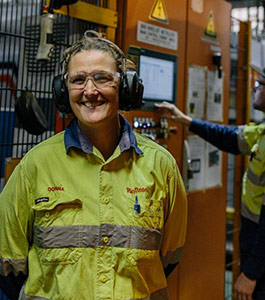
Workplace wellbeing refers to employee’s experience in the workplace, as it relates to their physical, psychological, and emotional state. Given that Australians spend more time with their colleagues and clients than their family and friends, it is essential that we feel valued, included, and protected while at work. Workplace wellbeing is directly correlated with personal and mental wellbeing thus, the relationship between the two can have a resounding impact on all areas of our lives. Simply put, the happier an individual is at work, the happier and healthier they are outside of work.
Beyond the welfare of employees, workplaces also stand to reap the benefits of workplace wellbeing. The absence of wellbeing within the workplace has been demonstrated to lead to high rates of absenteeism, turnover, compensation claims, and burnout. Furthermore, the lack of workplace wellbeing has been associated with an increase in presenteeism, whereby employees stay at work despite their dissatisfaction and mental strain, resulting in compromised productivity and employee disengagement. It is therefore evident that fostering workplace wellbeing is beneficial for both workers and workplaces alike.
A study by Reventure Ltd highlighted that 61% of Australian workers identified high team morale as the greatest indicator of employee wellbeing, and 85% of workers believe employers should create an environment that proactively addresses stress in the workplace. Instilling long-term, meaningful change necessitates time and careful consideration, taking into account workers’ needs and desires. Organisations can start on the road to well-being however by implementing EAP (employee assistance programs,) introducing wellbeing-based employee initiatives such as salary sacrifice schemes, making employees feel valued through recognising and rewarding hard work and enabling employees to develop friendships through social events. Every business has an ethical and legal obligation to ensure that workplace wellbeing is of paramount importance within their organisation, and the benefits for both employees and employers are undeniable.
References:
Black Dog Institute 2021, Workplace Wellbeing, Black Dog Institute, viewed 16 September 2021, <https://www.blackdoginstitute.org.au/resources-support/wellbeing/workplace-wellbeing/>.
Black Dog Institute 2021, Workplace wellbeing, p.1-3. Available at: <https://www.blackdoginstitute.org.au/wp-content/uploads/2020/04/5-workplacewellbeing.pdf>.
McMillan, L. (2017), Workplace Wellbeing, McCrindle for Reventure Ltd., p.7. Available at: <https://www.convergeinternational.com.au/docs/default-source/research/a-future-that-works—workplace-wellbeing.pdf?sfvrsn=c434b56e_2>
Perkbox, 16 surefire ways to boost employee wellbeing in your workplace, Perkbox, viewed 16 September 2021, <https://www.perkbox.com/au/resources/blog/16-surefire-ways-to-boost-employee-wellbeing-in-your-workplace>
Team at Slack 2021, 6 simple ways to foster a positive work environment: Learn how to set up your teammates for success by creating the best workplace culture, Slack, viewed 16 September 2021, <https://slack.com/intl/en-au/blog/collaboration/ways-foster-positive-work-environment>.
Australian HR Institute 2021, Health and Wellbeing, Australian HR Institute, viewed 16 September 2021, <https://www.ahri.com.au/resources/ahriassist/health-and-wellbeing/>.
Martik, K. (30 June 2020), What is employee wellbeing and how to launch a wellbeing program, viewed 16 September 2021, <https://blog.smarp.com/employee-wellbeing-definition-importance-best-practice>.





